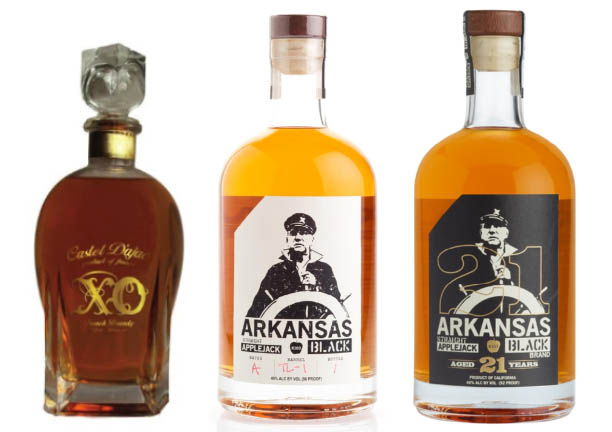
:max_bytes(150000):strip_icc()/__opt__aboutcom__coeus__resources__content_migration__liquor__2015__10__22165442__All-the-Reasons-You-Should-Be-Drinking-1st-composite-of-Black-Dirt-bottle-Cornelius-Copper-Kings-720x480-inline-6edb8607c7fd4316ac71467cc25133cb.jpg)
The brandy is aged in charred oak barrels, giving it its recognizable amber color. The distillation process used to make applejack brandy typically yields a product with an alcohol content of between 80 and 84 proof. The remaining concentration of alcohol is then distilled in traditional stills. The process begins by freezing a hard cider made from apples, and then extracting the ice from the resulting liquid. The name is derived from the method by which the brandy is produced, rather than the type of fruit used in its production.

It is a time-honored technique that has been used in America since the early days of colonial distillation.

Can you make applejack with pasteurized cider?.What does applejack alcohol taste like?.“I’d like to see more of it in non-stirred drinks, more light, summery, fruity drinks. “People tend to think, ‘apple, it must be a fall drink,’” Dao points out. However, applejack may still have one more hurdle to leap before it sees wider use alongside its brandy and whiskey brethren: it still gets pigeon-holed as a one-season spirit. “Applejack does really well in traditional sours,” Dao notes, pointing to Sam Ross’s modern classic, the Harvest Sour, which again splits the base equally between applejack and rye. Of course, not all applejack cocktails need to be of this variety.
#APPLEJACK BRANDY IN RAPID CITY PLUS#
By comparison, the classic Diamondback cocktail tilts in the opposite direction, adding a small measure of applejack to a more substantial rye whiskey base, plus Green Chartreuse. The split doesn’t need to be even, either: Whereas the American Trilogy, an Old-Fashioned variation, splits the base equally between applejack and rye, drinks like Middle Branch’s Legends of the Fall tilts the balance toward three-quarters applejack and one-quarter rye. “The spice from the rye and the subtle bittersweetness of applejack just layer each other very well.” This works with both straight applejack and blended applejack, depending on how much apple brandy flavor is desired, he adds-straight applejack will have more apple flavor than its blended counterpart. Dao, bartender at New York’s Middle Branch. “Rye and applejack make for excellent bedfellows,” says Dan Q. Often, that second spirit is a whiskey, and especially rye. It’s also common to see bartenders use applejack in a split-base cocktail, a technique that “splits” the main spirit between two different components. The recipe uses the brand’s bonded (100 proof) version for a “sturdy backbone” to balance other powerful flavors like Fernet-Branca and maraschino liqueur. For example, the Newark, a New Jersey-accented play on the Brooklyn family of cocktails, focuses on the provenance of Laird’s.
#APPLEJACK BRANDY IN RAPID CITY HOW TO#
While legacy brand Laird’s is often the one called for in bartender recipes, a number of other excellent, smaller batch applejacks also are worth seeking out, including those made by Black Dirt Distillery and Harvest Spirits (Cornelius Applejack), both in New York’s Hudson Valley, along with Chicago’s Rhine Hall Distillery.Īs for how to use it, a strong-and-stirred template is often the go-to applejack can work well in applications like the Old-Fashioned or the Manhattan.

She describes it as functioning like an “apple whiskey.” But whereas applejack (also known as apple brandy or “straight applejack”) must be produced from 100 percent apples, blended applejack is a blend of apple brandy and grain neutral spirits (this is a category that Laird’s petitioned for it was passed in 1972). “Essentially applejack and apple brandy are interchangeable terms,” explains Lisa Laird Dunn, executive vice president of Laird & Co., which has been producing applejack for nine generations. That confusion is compounded by the fact that there’s more than one type of applejack. Known as “freeze distillation” or “jacking,” the method is no longer permitted by regulators, but helps explain the modern-day version’s concentrated taste and often high proof. Rather than a suggestion of flavor, “applejack” is actually a historical reference to how the brandy once was made: Colonists would ferment and freeze cider, then drill a hole to extract the remaining high-proof liquid from the center. That’s in part because of the confusion about what exactly applejack is, and where it fits within the spirits canon. Still, applejack doesn’t typically get the same love for building cocktails as does Cognac (France’s famed grape brandy) or whiskey. This autumnal drink captures plenty of nuttiness and spice in the glass.


 0 kommentar(er)
0 kommentar(er)
